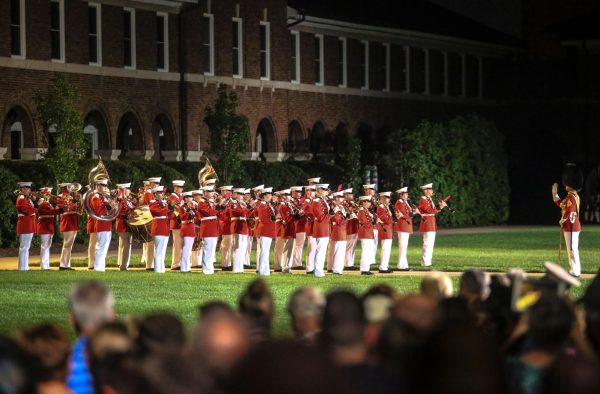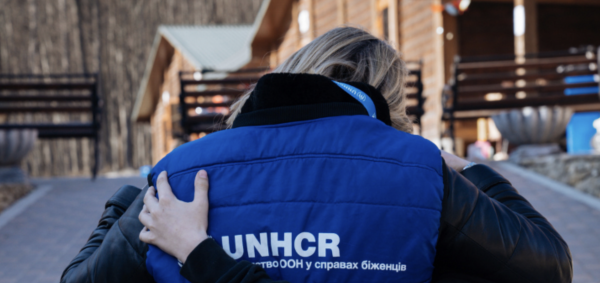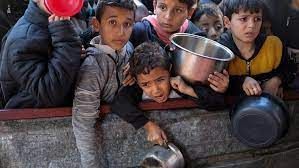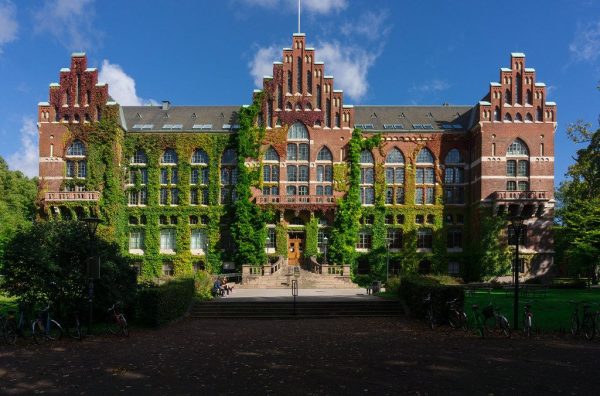Race And Ethnicity In Huntingtown High School

The hallways bustling with students, all from a different background/make-up. All with varying life experiences and stories. Huntingtown High School is an admirable school with a student body that may contain future leaders, government officials, or even a president for all we know. Both our school and our country have gone through very difficult time in the past few years primarily caused by the Covid-19 pandemic.
A current hot topic, also possibly fueled by the pandemic, was the discussion of race and ethnicity, specifically racial and ethnic discrimination. This has brought forth movements, “Black Lives Matter (BLM)”, “Stop Asian/AAPI (Asian-American & Pacific Islander) Hate”, being the most well-known. According to Statista, the approximate U.S. average of white enrolled (K-12) students is 45.8%; Black being 15%; Hispanic being 28%; Asian being 5.4%; Pacific Islander being 0.4%; 0.9% being American Indian/Alaska Native; and 4.5% being 2+ races. And according to the Centers For Disease Control And Prevention (CDC), roughly 35.6% (almost 1/3rd) of all high school students in 2021 have reportedly faced racial and/or ethnic discrimination in their lifetime. This figure is horrific enough and sadly likely doesn’t represent the actual amount of young individuals that’ve faced racial/ethnic discrimination.
We (the authors), feel strongly about this topic as we’re both Hispanic (Puerto-Rican/Peruvian and Italian. We take great pride in our heritage and ethnic background. During our collective time at HHS, we’ve both noticed there isn’t a whole lot of outright identifiable racial diversity in our school (from our perspectives). 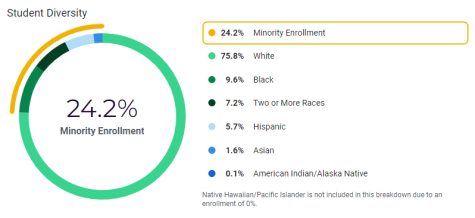 Though the actual figures were relatively expected (see accompanying Figure 1 for the racial diversity of HHS’s student body provided by US News), we decided to take a deeper look and interviewed 6 individuals from the HHS community race/ethnicity related questions. The results gave us a newfound perspective on this subject. Four of the six interviewees were HHS teachers (Mrs. Hoetzlein-Sirman, Mr. Jenifer, Mrs. Martin, and Mrs. Miller), while the remaining 2 were students who chose to remain anonymous.
Though the actual figures were relatively expected (see accompanying Figure 1 for the racial diversity of HHS’s student body provided by US News), we decided to take a deeper look and interviewed 6 individuals from the HHS community race/ethnicity related questions. The results gave us a newfound perspective on this subject. Four of the six interviewees were HHS teachers (Mrs. Hoetzlein-Sirman, Mr. Jenifer, Mrs. Martin, and Mrs. Miller), while the remaining 2 were students who chose to remain anonymous.
Now, something that needs to be established beforehand is the definition of the words “race” and “ethnicity.” There is a common misconception that the two words can be used interchangeably and are synonymous. While the former may be true in some cases, the latter is not. The Merriam-Webster Dictionary defines race as “any one of the groups that humans are often divided into based on physical traits regarded as common among people of shared ancestry”. Stanford University Gendered Innovations defines ethnicity as “groups …. that share a common identity-based ancestry, language, or culture.”
Among the various questions we asked, a portion of them were specifically about HHS. The first being “Do you think there should be more racial/ethnic diversity in HHS?” The responses were all ultimately “yes,” but were accompanied by a realistic side of it all. Mrs. Miller’s response in this section particularly outlined this. She said “the student population at HHS is just a reflection of the population in Calvert County, which is not as diverse as, let’s say in DC or Baltimore. I think we should focus on providing fair and equitable education to all ethnic groups at HHS that we do have, no matter if it is 5 students or 100.”
Next we asked “Do you believe adequate resources are being promoted/given to minorities in HHS specifically?” Mrs. Hoetzlein-Sirman’s response was well thought out. “While not perfect, HHS provides numerous opportunities to minority students, encouraging students to start clubs and organizations that meet their needs, promoting rigor with support for all students through access to accelerated and advanced placement courses, as well as reflecting on best practices to increase equity and inclusion. While no school or community is perfect, HHS has repeatedly demonstrated a commitment to improving minority opportunities.” Mrs. Miller’s response mirrored Mrs. Hoetzlein-Sirman’s in the intellectual sense but focused more on possible future endeavors of our school. She said, “At HHS specifically, I think we could do more to highlight the different minorities we have, like ethnic and gender minorities. One way to do that is to offer and attend clubs, and another way is to have a cultural awareness week with events/exhibitions at HHS.” We the authors feel that this is a genuinely great idea and are excited about the prospects of it. It is something to be considered for the future of our school.
Our third question was “How do you believe HHS staff has adequately handled discrimination issues, regarding race or ethnicity, in the past?” The responses ranged from the individuals not knowing, to more realistic and positive answers – Mr. Jenifer for instance. “I think they are doing their best, but race and discrimination is still a touchy topic. We (teachers) understand there is a problem, but no one wants to offend anyone or make anyone uncomfortable.” His response gave a lot of insight on teachers/staffs’ realistic perspective that a lot of students likely aren’t aware of or don’t even realize. Mrs. Hoetzlein-Sirman took on a more positive tone. “While no community is perfect, I believe that HHS has been committed to improvement, often reflecting on existing practices and making changes to address any shortcomings. Furthermore, student voice has been dominant in these conversations, thus demonstrating a dedication to improvement through self-evaluation.” Her response perfectly highlighted HHS’s advancements regarding this issue.
The following portion of our interviews had more of an outward tone to it. The first question being “What would you say your hope is regarding this topic as a whole?” Mrs. Hoetzlein-Sirman’s response was academic as always and was very fitting considering her being a teacher of American Government. It was as follows, “My hope is that younger populations become more involved in the political process and, through their activism, continue to advance resources and opportunities for minorities. Progress requires involved citizens willing to put in the hard work necessary for improvement.” Mrs. Miller’s response once again gave an insightful perspective. She said, “As a whole, I hope that we continue to address the needs of all people, especially minorities, on all levels, and that we continue to raise awareness and to have debates on perceived ‘others’ and our own reactions and behaviors.”
The following response was a bit more serious; it came from AS1 (Anonymous Student 1) who said, “I hope [Redacted] stops being racist, I’ve heard of many other situations of her doing microaggressions towards other racial minorities. Whether it was intentional or not it needs to stop, I also hope other teachers realize that students and other people are noticing their micro-aggressions or soon enough there’s going to be real consequences. To elaborate, in an earlier question that has not been mentioned, AS1 described an experience they had with a 9th grade English teacher. They said, “[Redacted] seemed to be intentionally mispronouncing my friend of middle eastern descent and questioning his pronunciation of it saying, “are you sure it’s pronounced that way?” with a snarky tone, she did this on multiple occasions.” We followed this question by asking AS1 what their reaction was to this event. They responded, “I’d say I was just in shock at her response; you don’t ask someone if that’s how they pronounce their name in that kind of tone when they’ve repeatedly already told you and it just felt especially unnecessary.” This is a sad truth that a lot of racial/ethnic minority people may deal with multiple times daily. We the authors too hope that this is the last time that teacher does such micro-aggressions but unfortunately it likely won’t be. We encourage all people to report this if they do end up in this kind of situation. It is not at all okay and needs to be dealt with in the appropriate channels.
On a more positive note, our final question, “What are some ways non-minority students/teachers/staff/etc. could help support and uplift the minorities in our school?,” yielded various responses. They came from, again, Mrs. Hoetzlein-Sirman, and Mrs. Miller. The responses were, “Staff should not shy away from current and contested issues but rather should practice deliberative strategies to assist students in having meaningful, structured conversations that allow for multiple perspectives to be weighed and common ground to be found.” and, “Whether or not you are a non-minority or minority student/teacher/staff, like me, we can help support minorities at school by sponsoring and attending clubs, participating in cultural diversity events at school and in the Calvert County community, learn a foreign language (where you also learn about different cultures), and just spend time with and talk to people of diverse backgrounds about their life, needs, and aspirations.” respectively. Both responses were very fitting for both individuals. We urge you, the reader (regardless of whether you’re a student or teacher), to seriously consider the advice given in both responses. While our differences in background in general should be celebrated, appreciated, and honored, we should respect each other and not let it, or anything else for that matter, divide us too much.



